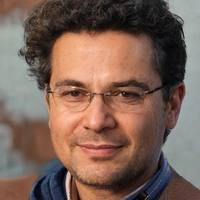Ever heard of math questions that just stop everyone in their tracks—even kids who ace every other test? Competitive exams love to throw these monsters at students and watch the panic set in. Forget simple algebra or geometry. We’re talking about problems that take hours, even days, and sometimes still don’t get solved.
But what actually makes a math problem “the hardest”? Is it mind-bending logic, insane calculations, or just the sneaky way they’re worded? If you’re prepping for an exam like the International Math Olympiad (IMO), IIT JEE, or even certain sections in SAT Math Level 2, you’ve probably come across a question or two that made you rethink your life choices.
It’s not just about knowing formulas. The toughest problems force you to see patterns nobody else spots, use creative thinking, and often, throw the rulebook out the window. Some of these questions have even stumped actual mathematicians for years before a breakthrough happened. If that doesn’t make you think twice, I don’t know what will.
- What Makes Math Problems the Hardest?
- Legendary Math Problems from Competitions
- Why Are Exam Problems So Brutal?
- Tips for Tackling Impossible Math
- Famous Stories of Breaking Through
What Makes Math Problems the Hardest?
So, what actually takes a math problem from just tough to “why did they do this to us?” level? It’s way more than lots of numbers or complicated formulas. Here’s what separates regular hard questions from soul-crushing ones, especially on the hardest math tests out there.
- Hidden Tricks: The hardest problems hide key ideas. You often need to spot patterns, make strange connections, or take an approach nobody taught you.
- Minimal Hints: Unlike school math, there’s no step-by-step guide. You get a simple, bare-bones question and have to do all the heavy lifting yourself.
- Time Pressure: In most contests, you’re battling a clock. Even if the solution isn’t that long, just finding the right path eats up precious time and mental energy.
- Mix of Subjects: The worst offenders take stuff from algebra, geometry, combinatorics, and number theory—and mash them into one wild ride. You need to know a bit of everything.
- No Plug-and-Play: Forget memorizing formulas—it rarely helps. Real competitive exam problems force you to break down new or weird scenarios using logic, not just memory.
For a quick look at what you’re up against, check this out—here’s how many students actually solve the hardest problems on famous world exams:
| Exam | Year | Hardest Problem Solved By (%) |
|---|---|---|
| International Math Olympiad (IMO) | 2023 | 8% |
| Putnam Competition | 2022 | 2% |
| IIT JEE Advanced Math | 2024 | 12% |
Pretty wild, right? Even among kids picked as the math geniuses of their countries, only a handful crack these. The problems need creativity and guts—no shame in struggling. The trick is figuring out what makes them hard, so you can start learning how to spot these features when you face them yourself.
Legendary Math Problems from Competitions
If you look at the world’s toughest math contests, some problems have turned into legends. These aren’t just hard; they’re the kind of questions that everybody in the math scene talks about for years.
The International Mathematical Olympiad (IMO) is the stage for the toughest of the tough. The IMO 1988 Problem 6 is notorious—it asks if it’s possible to split numbers 1 to 1988 into two groups so the group sums are the same. Simple? Every top student back then walked out stunned. A similar vibe hit in IMO 2006 Problem 3. The problem was so brutal that out of over 500 contestants, just 2 got full marks! That’s a failure rate of nearly 99.6%.
If you’re in India, the IIT JEE is legendary for its wild math tricks. The 2012 JEE had a matrix question that blended calculus and combinatorics. Even many coaching experts didn’t spot the shortcut until after the test. Or check out China’s National Higher Education Entrance Exam (“Gaokao”), where every year, a few math questions get leaked online because they’re just that jaw-dropping. One classic: proving that a super-complicated equation has only one real root—turns out, you had to see a hidden symmetry in the numbers.
Sometimes, these problems are famous not just for being hard but for breaking records. Here’s a small table showing problems from the past that left even the brightest students sweating:
| Exam | Year | Problem | Full Mark Success Rate |
|---|---|---|---|
| IMO | 2006 | Problem 3 | 0.4% |
| IMO | 1988 | Problem 6 | Under 5% |
| IIT JEE | 2012 | Matrix-Combinatorics | Approx. 2% |
| China Gaokao | 2023 | Complex Equation Root | Under 1% |
Most people think the *hardest math* must look scary at first. But the crazy thing is, the real monsters often look simple. Their magic is in the details—they hide tricks in plain sight. If a question seems easy but you spend half an hour going in circles, congrats, you just met a real legendary problem.

Why Are Exam Problems So Brutal?
Let’s be honest—exam problems in competitions aren’t hard by accident. These questions are designed to filter out the best from the best. For example, only about 6% of students who register for the Indian Mathematical Olympiad actually qualify for the next round. That’s not luck; that’s engineering.
So, what’s going on? Here’s why these toughest questions feel more like traps than simple tests:
- Hardest math problems never follow standard patterns. If you memorize steps, you get stuck.
- They test creativity, not just knowledge. For example, a simple-looking geometry question might need a trick involving trigonometry and number theory all at once.
- You’re under time pressure. The IMO gives you four and a half hours for three questions per day, and sometimes even top kids leave out entire problems.
- No calculators, no cheat sheets, and sometimes not even enough scratch paper. It’s just you and your brain.
- The language they use is meant to mess with you—deliberately vague or unusual wording throws people off all the time.
Check out how intense these competitions can get:
| Competition | Number of Questions | Average Solve Rate |
|---|---|---|
| International Mathematical Olympiad (IMO) | 6 (over 2 days) | Less than 10% fully solve all |
| IIT JEE (Advanced) Math Section | 18-20 | Average score: about 35% of total |
| Putnam Competition | 12 | Median score is 1 out of 120 |
Notice the wild thing here: the average or median score is nowhere near perfect. In fact, Putnam is legendary for making even math prodigies leave with almost nothing to show. That’s because these problems push for more than just a right answer—they squeeze out any gap in your thinking. It’s mental survival of the fittest, and that’s what makes exam problems so brutal.
Tips for Tackling Impossible Math
So you’re staring at a problem that feels straight-up impossible. Here’s the thing: almost nobody cracks the hardest math on earth by pure luck or just being a “genius.” It’s all about strategy, persistence, and not letting the fear get to you. Those tough competition problems? They get solved because someone breaks them down, digs for patterns, and turns confusion into something manageable.
Ready for some battle-tested tips? This isn’t about memorizing endless formulas. It’s about how you think:
- Hardest math problems usually hide the answer beneath layers—read the question slowly, then again. Most legendary competition problem solvers admit their first read never makes things clear.
- Don’t dive in and start writing. List what you know, what you’re being asked, and what’s missing. Some IMO winners sketch quick diagrams or jot down facts to see things visually.
- Try small example numbers, or work with easy cases. Many advanced contest winners like Maryam Mirzakhani (yeah, the Fields Medalist) said they’d play around with special cases before going big.
- If you spot a weird pattern, test it. Sometimes weird turns out to be right—big discoveries come from chasing something that “looks off.”
- Take breaks. Real talk, several famous problem-solvers hit a wall, walked away, then cracked it after a snack or even a nap. Your brain needs time to make connections.
- Check if the problem reminds you of something you’ve seen. Olympiads love to remix old problems in new disguises.
- Still stuck? Write a clean summary of what you’ve tried. This resets your thinking and sometimes, just explaining it to someone else (or even a rubber duck) makes the answer pop up.
If you want to practice this mindset, sites like Art of Problem Solving and Brilliant.org have famous competition problems with community discussions. And don’t forget—mistakes are normal. The best out there have bombed tough questions more times than you can count. The real flex isn’t instant success. It’s knowing how to keep going when it all looks impossible.

Famous Stories of Breaking Through
Nothing shows just how crazy the hardest math in competitive exams can get like the stories behind legendary breakthroughs. People still talk about some of these moments, and they show it’s more grit than genius that wins the day.
Take Terence Tao, for example. He’s basically a rockstar in math circles today, but back in 1986, at just 10 years old, he bagged a gold medal at the International Mathematical Olympiad (IMO)—making him the youngest ever to do it. He powered through questions that had high school seniors frozen, especially geometry proofs that required leaps of logic most adults don’t even attempt. Tao’s story keeps coming up for anyone thinking age or background can hold you back.
Some problems even made it into the news. In the 1988 IMO, one question proved so brutal only 1 in more than 300 students worldwide cracked it completely. The problem? A simple-sounding combo of integers and a twist—only pure creativity helped anyone get through. Statistics showed almost all contestants left it blank or handed in pages of work with no correct answer. It stood out as a textbook case of a problem being harder than its own creators expected.
Breaking down what happens in these feats shows a pattern: it’s rarely just raw talent. Many winners talk about getting stuck, coming back after a walk, and seeing the problem in a new light. Persistence and different perspectives seem to beat memorized methods every time. Mathematician Maryam Mirzakhani, who won gold in consecutive IMOs (1994, 1995), once shared that she’d sketch dozens of ideas until something “clicked.” She didn’t treat tough questions like roadblocks—just as puzzles to revisit.
- Terence Tao: Youngest IMO gold medalist; solved geometry proofs at age 10
- 1988 IMO: Brutal integer problem; only 1 student worldwide solved it fully
- Maryam Mirzakhani: Two gold medals by changing angles and approaches, not by memorizing
If you’re interested in what success rates are like, take a look at how often full solutions appear in hard olympiads:
| Year | Question | % of Full Solutions |
|---|---|---|
| 1988 | IMO Problem 6 | 0.3% |
| 2007 | IMO Problem 3 | 1.2% |
| 2011 | Putnam A6 | 0.6% |
Here’s the bottom line: breaking through in the world’s most challenging math usually means wrestling with confusion for hours, sometimes days, before the fog clears. The ones who finally get there? They didn’t know more—they just didn’t quit.

